Lab Created Diamonds – Are They Better?
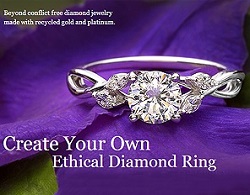 We live in truly exciting times.
We live in truly exciting times.
Advancements in technologies have enabled man to create diamonds in the labs at a tiny fraction of the time required by Mother Nature to do so.
Over decades of scientific research and continuous pushing of manufacturing boundaries, scientists are now able to create gem quality diamonds on a large scale basis to meet demands in the jewelry industry.
Now, I want to emphasize that lab grown diamonds have identical properties to traditionally mined diamonds. They are composed of the same material, require the same cutting/polishing process and exhibit similar physical/chemical properties to diamonds mined from the Earth.
Yep, that’s right and it gets even better.
Lab created diamonds can be made to the same level of clarity, color and brilliance as naturally mined stones. In fact, these man-made diamonds are almost indistinguishable unless they are subjected to specialized testing equipment like spectrometers and X-rays.
Benefits Of Buying Lab Grown Diamonds
For the consumer, there are 2 major benefits of buying lab created diamonds.
First of all, they leave minimal ecological footprints in the environment and are guaranteed to be conflict-free. This is because they are made in controlled laboratory conditions instead of being mined from the Earth with human-labor.
Secondly, you can easily save hundreds to thousands of dollars because of their significantly lower costs (about 20-30% less) compared to traditionally mined diamonds. This is good news for people with tight budgets as lab grown diamonds can help you get a better bang for your buck!
Downsides Of Buying Artificial Man-Made Diamonds
I’ll be completely honest here. It isn’t all sunshine and rainbows when it comes to buying man-made diamonds as there are certain downsides inherent of the current synthetic market.
First of all, diamonds are bad investments and don’t hold value well. I’ve written a comprehensive article about the fallacies of buying natural diamonds as investments. If this weren’t bad enough, you need to understand that the resale market for lab grown diamond is even worse.
To put it bluntly, artificial man-made diamonds have NO resale value and the secondary market for them is NON-EXISTENT. On top of that, the prices of artificial diamonds are projected to fall significantly when the manufacturers get better economics of scale and process optimization.
This means that the same diamond you purchased today is likely to cost less in near future.
The other disadvantage of buying a lab grown diamond is that the current supply of loose stones are extremely small compared to the natural diamond market. As a shopper, this means less vendors who deal with synthetic goods and a much smaller inventory to choose from to find your perfect diamond.
The third downside with lab cultivated diamonds is that the huge majority of them are cut to mediocre standards. If you want to find a truly well cut diamond, finding one is akin to searching for a needle in a haystack.
While there may be some disadvantages of buying a lab grown diamond, these issues can be mitigated by shopping smart and relying on tangible data for educated purchases.
And for most people who never plan on selling their engagement rings because of sentimental value, there’s nothing to worry about resale prices to begin with. Just buy the ring and enjoy wearing it (much like buying a car)!
Review of a Lab Created Diamond Purchased from BrilliantEarth.com
In writing this article, I bought a loose 0.31 carats G color SI1 clarity lab grown diamond together with a diamond ring for a review.
I also want to show you what you can expect to receive when you make a purchase from BrilliantEarth.com.
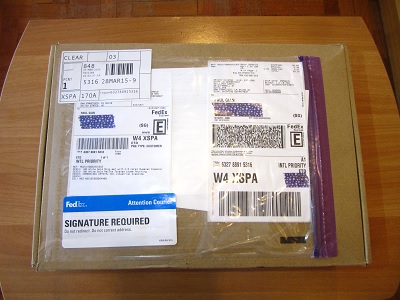
Delivery was made securely via FedEx shipping.
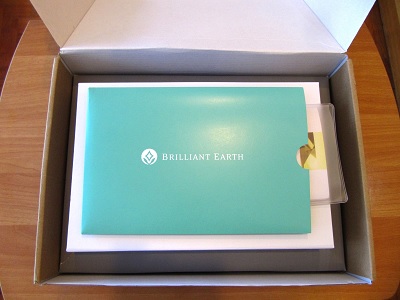
Teal colored envelope containing invoices, certificates and other paperwork.
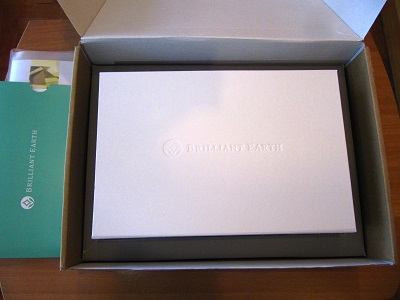
Pure white colored box with Brilliant Earth’s logo embossed on the front cover.
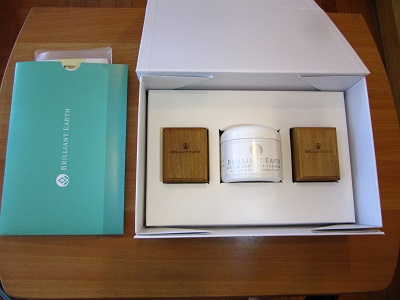
Jewelry purchase is snugly fitted and packed during shipping.
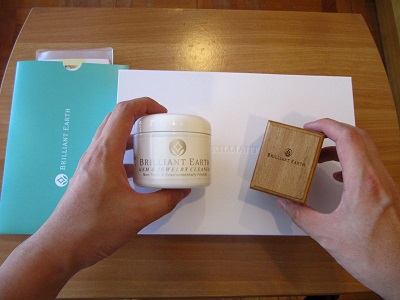
Extracting the contents and taking a closer look at them.
Taking a Peek Into The Various Components of the Parcel
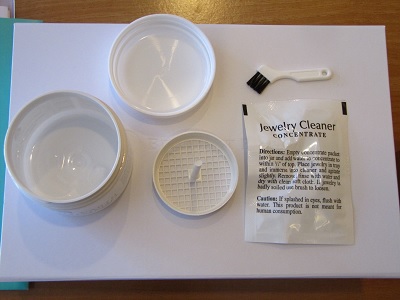
Complete DIY jewelry cleaning kit in a plastic container.
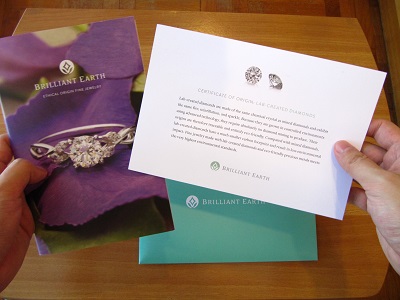
Brilliant Earth’s Certificate of Origin and information booklet.
Opening The Beautifully Handcrafted Wooden Ring Box
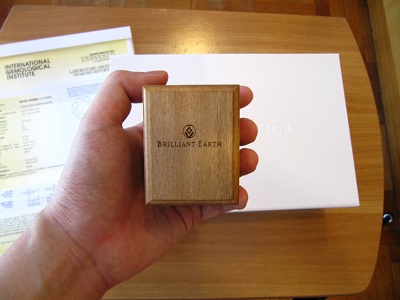
Brilliant Earth’s signature wooden ring box is hand-made in New Zealand.
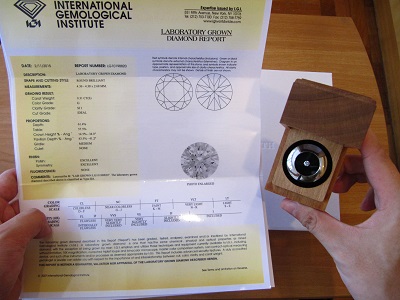
IGI grading report and ring box with loose diamond.
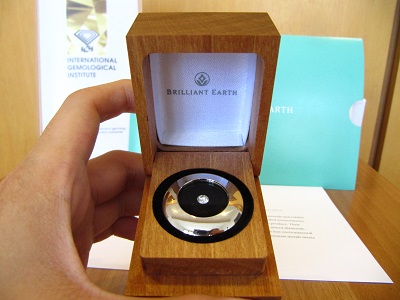
The loose man-made diamond is encapsulated in a transparent metal container.
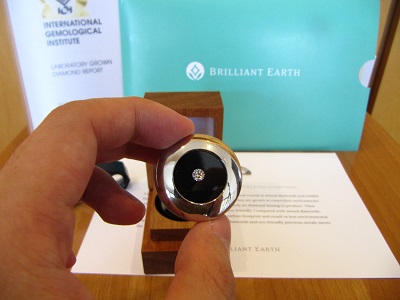
Picking up the metal container from the ring box.
Close Up Examination Of The Lab Created Diamond
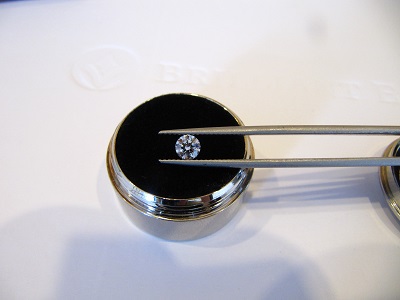
Picking up the loose diamond with a pair of tweezers.
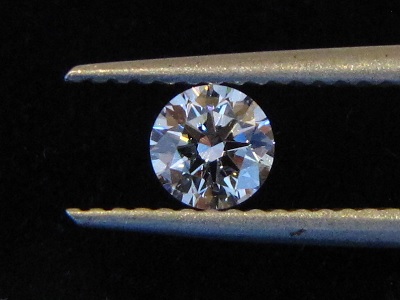
Loose round brilliant synthetic diamond at 10X magnification.
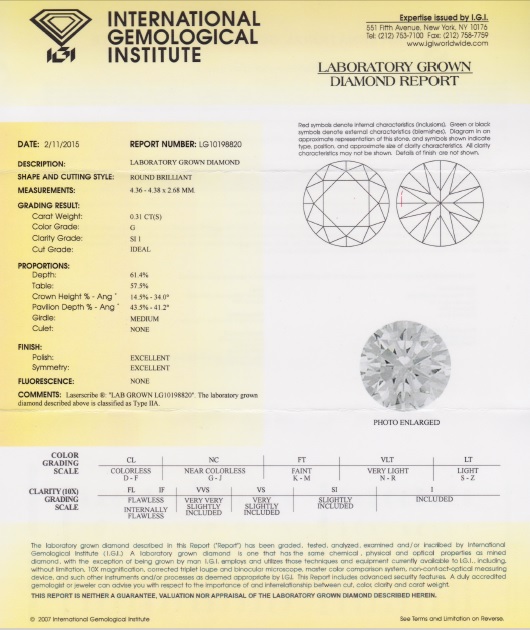
Full IGI report: Lab grown diamonds are clearly indicated with a laser inscription on the girdle.
Analysis of Synthetic Diamond’s Cut And Optical Performance
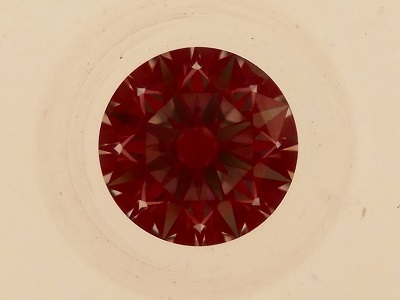
Idealscope image indicating some light leakage under the table.
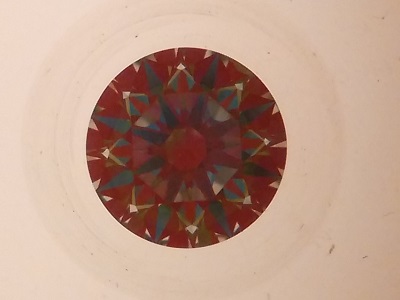
ASET image indicates a diamond with decent light return.
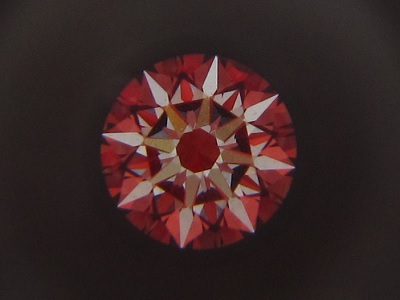
Inspecting the diamond under a Hearts And Arrows viewer.
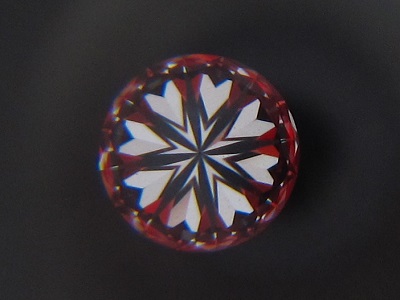
Hearts patterning revealing some defects in optical symmetry.
Video of 0.31 Carat G Color SI1 Clarity Lab Diamond
Where From Here? Should You Buy Man-Made Diamonds?
A lab grown diamond is the real thing.
As you can see from the video above, it can be just as beautiful as a mined diamond if the stone is cut to correct proportions. At the end of the day, it is all about your preferences.
If you are someone who wants to purchase an engagement ring that is produced in a socially and environmentally-friendly manner, man made diamonds offer a meaningful way to help you do that.
Related Articles
Leave A Comment

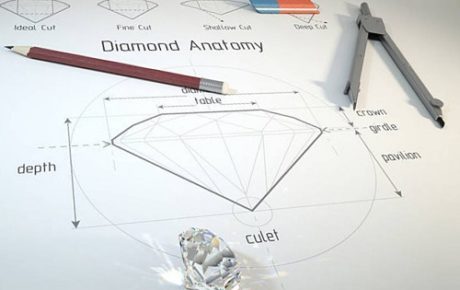

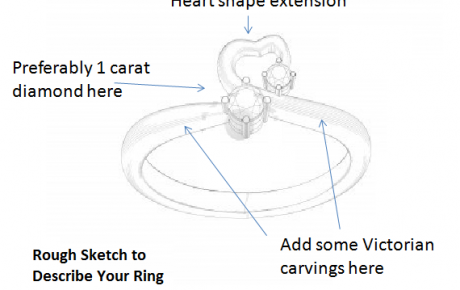
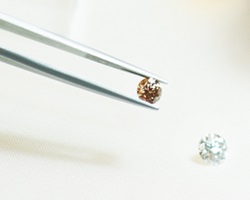









133 Comments
Wow Paul. I just had a look at Brilliant Earth’s prices for lab created loose diamonds. They are charging prices very close to natural diamonds. How ridiculous. Gemstones have a metaphysical property that is equal to or created than the value of it’s three dimesional beauty. You can’t experience and enjoy this value with a lab created stone.
Laboratory grown diamonds actually sell at approximately 20% cheaper than naturally mined stones. Due to technological limitations, I actually don’t see the prices of manmade diamonds coming down in near future. You will notice the price differences when buying large size diamonds. i.e. if a natural diamond costs $20,000, a synthetic diamond with similar specifications will cost around $16,000. If you are buying smaller diamonds, you probably don’t see such a huge absolute difference in costs.
I am suspecting that when artificial diamonds manufacturing process become optimized and gain economics of scale, the prices will drop even further in future.
I bought an artificial diamond from brilliant earth. The dimensions and weight match, but there is no igi number inscribed and Shane company tested it with a handheld diamond tester which read mossanite. What would you recommend to do?
Get the diamond tested at another independent appraiser who has no interest in selling you diamonds. You could also bring it to another jeweler for a review. If it still comes back as a stimulant, bring this concern up with Brilliant Earth.
Hi Paul, you mentioned Igi and egs being not as reliable as GIA and AGS…is there a reason Brilliant Earth doesn’t use GIA or AGS for their lab ratings? Thanks for your explanations- so much to learn.
It’s a business decision by their suppliers to use IGI instead of GIA. In the current market, all commercial man made diamonds have non-GIA reports.
Hey Paul, I have a question and I wanted to thank you because I’ve been learning alot about diamonds! I went to a showroom of Brilliant Earth and my girlfriend loved a setting there and now I have to make the hard choice of getting a diamond. For sure, I’m getting a lab-grown diamond from them. The diamonds I have in mind are in the 900-1k dollar range with IGI certs.
My question is about specific diamonds I want to purchase. I got the picture for 2 and they told me more pictures were coming. I LOVE that you put the video up on youtube because it really gives perspective. Anyways, here are my options.
1714493Y .56 Carat, Round, Very Good Cut, F, SI2
1746704Y .54 Carat, Round, Ideal, H, SI2
1714682Y .48 Carat, Round, Very Good, H, VVS2 (no pic yet)
1748890Y .51 Carat, Round, Super Ideal, F, SI2 (no pic yet)
Is the SI2 rating risky? Do the diamonds look bad?
Both diamonds aren’t cut well enough for me to recommend them. You can easily see this in the wonky contrast patterning displayed by both stones in the static images. Keep looking! Get ASET images as well because those will readily reveal cut issues in the diamonds.
Quisiera saber si el diamond tester 3 reconoce como simulación de diamante (moissanite) o lo reconoce como diamante natural
It will test as a natural diamond. Artificial diamonds have identical properties to naturally mined stones.
Hello Paul,
My boyfriend and I have been together for a few years. We’re ready for that next big step, but limited budget wise. I’ve had my heart set on an emerald cut engagement ring, but have tried to prepare myself if he simply can’t afford it. He wouldn’t get one that didn’t have a decent color and high clarity. I would love to have the ring of my dreams, but know that the man of my dreams really doesn’t have the means.
Now after some research, I am open to the idea of him giving me a lab grown diamond. You’re one of the few resources that seems to be knowledgeable and honest.
I came across this item on eBay claiming to be a lab created diamond ring. I was hoping you could clarify if this listing is crap or not. :)
http://www.ebay.com/itm/5-00-Emerald-Cut-Solitaire-Engagement-Wedding-Ring-14k-Real-White-Gold-/262090773372
I would also appreciate the names of other trustworthy suppliers of lab-grown diamonds.
Thank you,
Kat
That’s not a diamond. It’s a stimulant or commonly known as cubic zirconium (CZ).
https://beyond4cs.com/faq/how-to-spot-a-fake-diamond/
The listing has made that clear as well with the label “Simulated”.
Hi Paul,
Do you have any idea how diamond nexus and brilliant earth’s diamonds compare against each other? Some articles on man made diamond reviews would be helpful.
thanks.
One sells real diamonds even though they are lab grown (Brilliant Earth) while the other doesn’t.
Hi Paul,
Does the lab grown diamond hold value over time as the real diamond would given that both are certified (lab by IGI, real by GIA or similar)?
Diamonds are terrible investments and they do not store value with the exception of auction pieces (think those that are truly rare and cost millions of dollars). Compared to a real diamond, a cultivated stone will be worse when it comes to retaining value.
Which is better on Brilliant Earth’s lab created diamonds, IGI or GCAL? What are the differences between them if you had reviewed them before?
Both are pretty much on par. GCAL does offer some data on light performance and that helps you visualize the stone’s performance to some degree.
Hi Paul, In several of your comment replies, you use the term “stimulant”. Do you mean “simulant”? Thanks.
Thank you for highlighting this. It’s a mistake on my part and I’m sorry for the typo errors.
Hi Paul
Great job on your website.
My girlfriend has found a ring she likes it’s super cheap but she kind of has her heart set on it.
What do you think?
Thanks in advance
Super cheap + questionable eBay listing = Surefire way to get ripped off.
No way a 0.70 carat lab grown diamond gets sold at $140 (inclusive of setting).
Don’t be foolish.
I’ve heard that IGI grades are typically inflated compared to other grading labs. E.g. an IGI VVS1 might only be a VS1, an IGI F might actually be a G or H, etc. Is that a concern with Brilliant Earth’s lab grown diamonds?
If you are talking about IGI appraisal documents or IGI reports where the loose diamond isn’t unmounted, what you say may hold true. Apart from that, IGI’s grading doesn’t vary so wildly as you mention (VVS1 to VS1 is a big difference) but they tend to be looser in the grading standards compared to GIA/AGS.
An IGI SI2 may in fact be a I1 by GIA standards. I’ve seen this many times and this is one of the reasons why I don’t like buying diamonds with IGI reports.
Unfortunately for consumers, at the moment most commercial lab grown diamonds are only graded by IGI. If you are fixated on a lab created diamond, consumers will just have to live with buying one with an IGI report.
That said, GIA does grade synthetic diamonds but it isn’t meant for the market at large at the moment.
Hi Paul!
Great article! I stumbled across this as I was doing some research on lab created diamonds, and I noticed there are a number of different companies offering these stones online. You had noted Brilliant Earth was the largest online retailer for lab created diamonds, but companies like MiaDonna, Pure Grown, and Diamond Foundry seem to have just as much if not more selection on their websites (though it appears Pure Grown has recently transitioned to selling just in stores). Are these websites just as reputable as Brilliant Earth? Or would you recommend sticking with Brilliant Earth and not risking another site?
Thanks!
Emily, the companies you mentioned like MiaDonna and Pure Grown are pretty decent businesses. I have no experience with Diamond Foundry and can’t say much about them. It depends on what you want and what you are looking for. Work with the vendor who can offer you sufficient details to size up a diamond and one that you are comfortable with.
Hi Paul,
I only recently learned about laboratory cultivated diamonds and have been doing some general, online research (mostly curiosity).
I just wanted to say “Thanks” for donating your time to educating people.
Hi Paul
Fake is fake. Fake Rolex, fake cartier, whats next. A discount of 20% or so is a joke, should be sold at 20% of real stones. Resale value of next to zero. Opens more doors for some unscrupulous to sell as real. With your knowledge and education I am surprised you would endorse this.
William
Nothing wrong with technology and man-made diamonds. Unethical jewelers can rip you off with real/natural diamonds using misrepresented quality and dubious certificates. There’s nothing wrong with lab grown technology, it’s the selling process that the crooks use to scam consumers and this can happen regardless of the kind of products sold.
Love your article. I have never heard of “real” man made diamonds. I have done a lot of research and have some questions…
There are so many sites online that clame to be “real” man made diamonds but really are polished CZ- Asha, nexus, betterthandisminds, Agape… I know you mentioned brilliant earth…. Besides them what are other companies that provide the real deal?? Pure grown diamonds? Any information is appreciated?
If they have IGI certified is that all you need to look for? It’s just horrible how fraudulent this business is… I do not want a CZ with a silver costed ring for 1000’s…
Any advice is appreciated!!
I understand your frustration and admittedly, there’s an issue with how retailers are marketing their goods. Price is a good guideline for figuring out who’s selling what. In general, stick with an IGI report when it comes to buying a synthetic diamond. If there’s no grading report, you can be assured you are either buying a misrepresented product or a fake stone. Either way, it’s going to get you ripped off.
And yes, pure grown diamonds sells synthetic diamonds.
Hi Paul, thanks for your comments.
I was trying to buy from DiamondEarth and Diamond Foundry – both has poor customer service – if you try chating with them they are lost for days (Diamond Earth will not answer at all sometimes, just disappear). Finally I’ve chosen my favorit stones but ASET/idealscope images refused to be provided as well as marking of inclusions (Diamond Foundry). So I can not buy from them online without any idea on stone face up! Do you know one lab created company who can provide ASET and Idealscope?
Go here: https://beyond4cs.com/go/brilliantearth/
If a retailer cannot take care of their customers, there are always better ones that will.
I’m wanting a mans gypsy-type setting with a yellow lab created diamond (at least .75)
I can’t find a dealer in my area that carries lab created diamonds & it’s difficult to imagine buying such a item online.
I live in Silver Spring MD USA which is a suburb of Washington, DC.
Any suggestions?
Your best bet with lab created diamonds is to look for a well cut diamond at Brilliant Earth.
Paul, so glad to see you are still answering questions! Truly a great gesture to people you don’t even know! I have two quick questions:
1) What is the #1 vendor that you would recommend for naturally mined diamonds?
2) Regarding value / maintaining value, how big of a factor for you is it that Brilliant Earth offers the Free Lifetime Diamond Upgrade for its real/natural diamonds but not its lab created diamonds? Neither are a great investment in terms of holding value, but in a way doesn’t the natural diamond hold its value if you can exchange it for 100% credit at any point in the future? And doesn’t this also kind of speak to Brilliant Earth’s lack of confidence in lab created diamonds’ value in the long term?
1) https://beyond4cs.com/best-place-to-buy-engagement-ring/
2) Diamonds are just bad value for investments. Don’t think of them as such. If you want to invest, head to the stock market. The diamond industry isn’t the place for the average investor to make money from. The diamond upgrade is only applicable to buying another diamond. In that sense, it isn’t a 100% credit since you don’t get your money back. Anyway, such policies are common place and many vendors offer something identical.
First, great article and website. I am looking to purchase a lab made diamond @ https://www.brilliantearth.com/lab-diamonds-search/view_detail/3145131/
My biggest question mark is why does it seem much cheaper relative to the others. One of the other stone i am looking at is this – http://www.brilliantearth.com/lab-diamonds-search/view_detail/3018883/
Cut quality is likely the reason why. Based on the video in the listing, I can tell you that that this diamond is well cut for light performance.
Hi Paul – thanks so much for your review here. I am looking at purchasing the following lab-made diamond: http://www.brilliantearth.com/lab-diamonds-search/view_detail/2252717/ I requested the preview report which they have provided and following up with high-res photos for me to review next 2-3 days.
Given the clarity, I think this lab diamond price seems to be discounted relative to peers to account for H Color, but cut proportions are excellent according to your spec. What I am concerned about is whether or not an IGI “H” could fall into an I or J with GIA, and would this be a noticeable flag for you? Will be set in a white gold setting. Your thoughts on this stone are appreciated, thanks!
Proportions wise, the diamond looks OK. Beyond that, I can’t tell you much without concrete information like images.
Hi Paul
Ive heard some reports that brilliant earth lab created diamonds and other lab synthesized diamonds, whilst still maintaining sparkle, have less “fire” or none at all. Would you say that was your experience?
Also, you mentioned that the lab grown do not retain value like the real deal, but can you elaborate? for instance would it lose all value once sold? or would it retain some value albeit much less than real diamonds? All these questions make me wonder should i get a lab created diamond?
Any help appreciated!
That largely has to do with cut quality and nothing of material issues. In this particular lab grown diamond, I would say it isn’t as bright another identical diamond with the best possible cut quality. In terms of fire, I think it does pretty well.
Diamonds don’t retain value well regardless of being natural or synthetic. The problem with lab created gemstones is that nobody wants to pay a sum of money to buy them back due to supply and demand. That’s why offers to buyback are often low balled that it doesn’t make sense to sell them. If you want to purchase jewelry with the mindset of having them retain some value, I would recommend only buying gold (or pure metal) jewelry.
Hi Paul,
Thanks for taking the time to answer all the inquiries from fellow diamond novices. I have been in the market for a 2CT diamond for a few months now in the 10K price point (So with that I understand come sacrifices)
We recently purchased a GSI graded 2.17 CT round brilliant.
It has one large inclusion on the edge and one slightly smaller one just outside the table, but is otherwise a very clear diamond. The description is as follows:
Depth: 63.8%
Table: 58%
Crown: 16.4%
Pavilion: 42%
Girdle: med to slightly thick, faceted
Culet: none
Clarity, I2
Color, E
Fluorescence: Strong, Blue
Symmetry: Good
Polish: Good
Cut: Very Good
The biggest thing I’ve notice is the BRIGHT blue hue my diamond takes on in direct sunlight. So while still in my return window, I started looking at manmade diamonds and stumbled upon this from Brilliant Earth. I have requested photos and a 360 view of the actual diamond.
https://www.brilliantearth.com/lab-diamonds-search/view_detail/3379612/
My question is this: Do you think this manmade diamond would give me more “bang for my buck”?
The GSI diamond is a terrible option. It is cut poorly (from its proportions) and the grading lab report isn’t reliable. You definitely overpaid for that stone. As for the Brilliant Earth diamond, the proportions look OK but that really means nothing without tangible images.
Have you heard of fire light lab grown diamonds? I’m also looking for vrai and oro engagement ring reviews to find out more about their products. Are Nexus Diamonds synthetic or simulated? They say they’re the same as real diamonds. I’m so confused…
The wordings used by many such retailers are done on purpose and that is to mislead. Simulated = FAKE DIAMONDS. These do not possess the same properties like hardness, toughness or optical properties like diamonds.
I’m looking to upgrade. My original company gives me entire purchase price of middle stone or I can use as trade up in another store or I can buy online and be stock w my other ring. Have you ever heard of Adiamor.com? Seems reasonable prices. But again if I use online to buy ring I cannot trade my old ring (paid $5k for old ring)
Have you heard of Diamond Foundry before? I am looking for man made diamonds and came across this site. Interestingly, after choosing a setting, some diamonds appear to be included in the price of the setting – it seems to resonance to be true.
Nope. Never heard of them before but I did check out their website on your behalf. The in-house grading report is definitely a red flag because of potential conflict of interest. Reliable jewelers don’t usually perform their own grading but instead, send the diamonds out to 3rd party neutral grading laboratories so that the rating of the diamond is impartial.
I found a beautiful ring at Agape Diamonds LLC. Can you tell me anything about this company’s products?
I’ve never used their services. You need to be extremely careful about the differences in simulated diamonds and synthetic diamonds. They aren’t the same.
I need help in reviewing a man made diamond ring that I purchased from eBay. Do you offer consultation services or know of someone with the expertise to review my ring?
Take it to an neutral 3rd party gemologist for a review. They should be able to tell you more.
Thank you so much for all your detailed blogs and information – especially on the lab created diamonds as this is what my boyfriend and I are looking into lately. There aren’t any stores where we live in Canada that sell them so we have been looking at Brilliant Earth since they seem to have the biggest online inventory.
I read in some of the comments here that the IGI system used by Brilliant Earth to grade their lab created diamonds is slightly “off” from the typical GIA system for mined diamonds. Since we are buying it online, should narrow the search results to one level higher than normal then? i.e. if we wanted a G color, VVS2 (based on GIA standards), should be only search for F color, VVS1 lab created diamonds on the Brilliant Earth website to make sure to account for any differences in grading?
The problem with IGI is that they are not consistent (they can sometimes go severely off or be on par with GIA’s grading standards). I won’t worry too much about clarity gradings as long as the diamond doesn’t have inclusions that can be seen by the naked eye. Make sure you get detailed images and cut information on the diamonds you shortlisted and you should be fine.
Thanks for all the valuable info and personal insights on lab created diamonds. I’ve been trying to find as much information as possible regarding these diamonds.
Do you know where I can find more information on companies selling lab created diamonds regarding reputation? Are you familiar with E3 lab created diamonds? Do you advise these are as reputable as Brilliant earth?
I have no experience with E3 lab grown diamonds. Brilliant Earth was a vendor I personally tested because they are one of the largest retailers in the world for manmade stones.
Hi Paul,
Thank you for all the helpful content and feedback.Typing this as i’m watching the blood diamonds documentary.
I’m in a dilemma between man-made and mined diamond. But siding closer to a mined diamond.
Conflict free is quite important for my girlfriend as she is quite emotional about such things.
Is the kimberly process still reliable today? has it ever been?
Is it true that the origins of diamonds are not tracked at all besides certain Canadian diamonds that have laser inscriptions. It casts a large shadow of doubt that such a lucrative industry doesn’t have a stable way of insuring the origin of their diamonds when almost every other industry out there does.
Also this whole GIA not participating in grading lab created diamonds makes my decision even harder as i’m looking a diamond along the lines of 1 to 1.3 carats, round, D, VS1-VVS1, and no fluorescence. With IGI having looser grading standards, I don’t want to buy a lab diamond that isn’t really D color or at least VS1.
GIA probably knows if they started grading lab diamonds that their influence would be huge on the diamond industry.
But the pro of a lab diamond, I’d know for sure they are conflict free and i’m not buying some mined diamond that claims to be conflict free but really isn’t because of some under the table dealings
Sorry for the long post, I hope you can ease my mind on which direction to buy.
Thanks,
Robert
I would say that the Kimberly Process is somewhat reliable (at least I believe in it). Tracking a diamond’s origins with documentation incurs quite a substantial amount of fees with high volume. It’s doable but most upstream businesses will tend to choose the most basic and cheapest method to get things done.
Canadian diamonds are a good example of more detailed tracking and a well known conflict-free zone where diamonds are mined. For commercial lab grown diamonds, you nailed it on the head about the comments about GIA. I personally think it is a more political move by them not mass grading synthetic diamonds. Unfortunately with manmade diamonds, you just have to trust IGI on the quality of their grading standards.
If your concern is conflict free, you may want to consider stones with Canadian origins:
https://beyond4cs.com/go/brilliantearth/
https://beyond4cs.com/go/bn-canadian/
Paul,
First of all, thank you for this incredible resource and shedding some light on this intransparent industry.
I am narrowing down on an engagement ring by Vrai & Oro which has an exclusive partnership with Diamond Foundry and we prefer a synthetic diamond for ethical reasons anyways.
The diamonds I am considering are:
– Round, 1.63ct, H, SI1, Sig. Ideal – $6,027 certificate.diamondfoundry.com/download/44809.pdf
HCA: 1.9
Gemologist notes: ‘There is a small inclusion on the outer edge, which could be covered by the prong. There is also one slight inclusion closer to culet (point of the diamond).’
– Round, 1.65ct, H, SI1, Sig. Ideal – $6,101 certificate.diamondfoundry.com/download/71059.pdf
HCA: 2.4
Gemologist notes: ‘All inclusions are near the edges, and can easily be covered by prongs. Light is reflecting in the middle, and there is nothing under the table.’
Stretch goal:
– Round, 2.30ct, H, SI2, Sig. Ideal – $8,740 certificate.diamondfoundry.com/download/60922.pdf
HCA: 1.8
Gemologist notes: (not received yet)
I checked HCA and they seem within range (1.9, 2.4, and 1.8). Unfortunately, they couldn’t provide me with ideal scope images nor images under magnfication so far, but I am still working on it. As for color, I plan to get a 18k yellow gold setting so my understanding is that a high color grade is not as critical.
Their gemologist says their stones have inclusions that are favorable to being covered by prongs, but I can’t judge myself without macro photos. The 2.30ct seems like a good deal (especially compared to natural stones) but it’s hard to tell without seeing the inclusions, especially since I read that inclusions can be more visible in larger diamonds.
Additionally, they charge $165 for IGI certificate and $375 for GIA. IGI is in the same city as them so they don’t have to ship and insure (which I confirmed). Do you even recommend getting a certificate for a synthetic diamond if we don’t see it as an investment, and if so, is it worth the extra money for GIA (given that their reports for synthetic diamonds are more generic for color and clarity)?
They stand by their product with the ‘Forever Guarantee’ (refund/replacement if any lab rates it lower): https://www.diamondfoundry.com/pages/forever-guarantee
How would approach choosing a synthetic diamond based on the data above and what’s your take on the guarantee? I am sure other readers would be interested as well.
Thanks,
X
The diamonds themselves look OK by their numbers but that alone doesn’t confirm performance. I would try to get my hands on tangible data like idealscope or ASET images if possible. Photographs and videos would help too.
As for the grading report, if I were personally buying this diamond, I would get the stone sent to GIA for grading on the condition that the diamond must ATTAIN equivalent or better cut/color/clarity grading compared to what they stated in their in house report. Failure to which, you WILL NOT have to pay the $375 made for the GIA grading and that you have a 100% money back guarantee on the stone. And of course, if it checks out, you pay the $375 fees as that is only fair.
If the company says otherwise or refuses to agree to these conditions, it tells you one thing. They don’t stand behind their products nor do they believe their grading standards are on par with GIA’s.
Hi Paul, thanks for your post and comments. I was curious as to why you mentioned IGI being better than GCAL. Everywhere else I checked, people are saying GCAL is a better way to go. Are the best lab created diamonds certified by IGI or GCAL? Thanks!
For lab created diamonds, IGI reports are currently the only commercially viable ones. GCAL is best used in conjunction with another report e.g. (GIA) as it provides some insights to diamond performance. Based on my observations, the best lab created diamonds in terms of light performance are often certified by GCAL.
Hi Paul! Thanks for your posts!
I definitely want to buy a lab-grown diamond for my fiancée, since for environmental and ethical reasons I will not go for the mined ones. I’m nevertheless feeling very confused after reading several comments of costumers of Brilliant Earth saying they tested their synthetic diamonds in jewellers and gemmologists and their “diamonds” tested as moissanite. After having read several times that lab-grown are chemically and physically identical to natural diamonds, I cannot understand how this is possible. Is it a pure scam from BE, or I lost some piece of the information about the differences between the natural and the lab grown versions?
See some examples here:
https://www.yelp.com/biz/brilliant-earth-san-francisco
Thanks!
I would be surprised if the artificial diamonds from Brilliant Earth are tested as moisannite but to be fair, a jewelry tester is notoriously inaccurate. And if a jeweler applied the same form of testing using a tester to deem it as a moissanite, it is saying something about the mode of analysis. Bring the ring to a 3rd party neutral appraiser with no ball in the game and get it checked out. And why would BE run a scam to risk their long term business over a few thousand dollars? It doesn’t add up. There’s some misunderstanding somewhere.
Hello Paul,
Thank you so much for this article. It brought both insight as well as a sense of comfort knowing that I am buying from a reputable source.
I was eyeing the two diamonds linked below:
https://www.brilliantearth.com/lab-diamonds-search/view_detail/3305657/
https://www.brilliantearth.com/lab-diamonds-search/view_detail/4050869/
I have requested for an ASET/idealscope image and they replied that it might be difficult to get it if the diamond already has a 10x/20x image. Nevertheless, I’m going on the assumption that these images will eventually come.
What would you recommend as the next steps? Could you comment on the two diamonds attached? I’ve gone through many of your articles but the entire process is still extremely daunting for me.
Kindest regards,
Jason
Jason, for a lab grown diamond, both are well cut diamond options. I would have preference for the first stone because of its contrast patterning.
Hi Paul,
While it’s no longer available, I had been looking at this lab-grown diamond at Brilliant Earth: http://www.brilliantearth.com/lab-diamonds-search/view_detail/3019586/. The listing includes a IGI report and video of the diamond. It was listed at $2320 and has a HCA of 0.9, although it seemed to have some symmetry issues based on the video.
Should I have pulled the trigger earlier? Or am I lucky to have missed out?
Your blog has been incredibly helpful in my search for an engagement ring, thanks!
You are lucky to miss out. There are better options out there.
Hi Paul,
Why do you say that David was lucky to have missed out? Which property did you look at? Or was it concluded just by looking at the clip?
From the video, the cut quality is sub-par; with some experience in viewing diamonds live and correlating to the videos, you can do the same as well.
Hi Paul,
Great posts! Even if the 4 C’s are top notch in ratings… what makes it a poor diamond dimension wise? What proportion of dimensions would make it better?
Thanks!
Liz
The proportions of the angles and facets play a role in determining light performance:
https://beyond4cs.com/shapes/round/ideal-proportions/
https://beyond4cs.com/truth-about-gia-triple-excellent-diamonds/
At the end of the day, a D internally flawless diamond with triple excellent ratings mean nothing and can look worse than what a well cut diamond would.
Paul,
I visited Brilliant Earth and requested to look at both lab made and mined diamonds. After reading your articles regarding GIA vs other certification reporting companies, I became a little skeptical when the sales associated advised that the mined diamond was GIA certified while the lab one was IGI certified. You mentioned that it’s a business decision – but what is the business decision exactly? I feel that it’s somewhat deceptive. Why won’t GIA certify lab made diamonds? And can I really trust the IGI certification because in another article you advised buying a diamond that is IGI certified because they are more lenient. Ultimately, I’m not sure how much money I’m saving if I’m getting a lower rated diamond because of the IGI leniency in rating. Your thoughts are appreciated! Thank you.
As far as I know, GIA may not have the capacity to deal with large volumes of synthetic diamond grading (and maybe because of some other political issues with their current business of grading natural stones). It is how it is at the moment because IGI is the only company doing large scale grading of commercial cultivated diamonds. If you aren’t comfortable with them, stick with natural diamonds with GIA/AGS reports.
Hi Paul,
Thank you so much for posting answer for as long as you have. Recently I became very interested in purchasing a lab grown diamond from brilliant earth but am having difficulties distinguishing a good diamond based on provided proportins. Are lab diamonds worth it from the perspective of an investment and would you say this has good proportions?
https://www.brilliantearth.com/lab-diamonds-search/view_detail/3968931/
Thanks again
Proportions wise, it looks good on paper but that really says nothing about actual performance and how the diamond looks like in real life. Diamonds are poor investments and with lab made diamonds, they are not worth money on the resale market.
Hi Paul, thanks so much for the lab grown diamond reviews. I am researching round cut lab diamonds on BE. Most of them are rated by IGI and few by GCAL. What I don’t understand is why those rated by GCAL are more expensive than those by IGI?
For example, a 1.51ct D vs1, ideal cut that is rated by IGI is $7,450
https://www.brilliantearth.com/lab-diamonds-search/view_detail/5072207/
And by GCAL is $10,700
https://www.brilliantearth.com/lab-diamonds-search/view_detail/5116720/
Please share any insights you have. Also, do you have any previously written lightbox diamond reviews? Thank you!
Cut quality is one area of difference. However, when I look at price of the GCAL vs IGI diamonds above, cut quality itself doesn’t justify the big differences. Check in with Brilliant Earth. It is likely due to different prices the diamonds cost them from their suppliers.
Lightbox is the arm of jewelry created by De Beers to flood the lab made diamond market with cheap pricing. Most of their jewelry sold under the brand is made up of tinier diamonds and geared towards costume jewelry.
Hi Paul,
Thanks for all this interesting feedback and advice. We are in the beginning process of looking for loose stones to add to a family ring and are interested in yellow lab made diamonds. Curious to get your thoughts on this stone. We saw it in person and it was gorgeous, but know very little about this whole process so thought I would ask your general impression of it. I am also getting the sense that finding round yellow lab made diamonds may be a bit more difficult than other cuts? Is this usually the case?
Thank you!!
https://www.brilliantearth.com/1.49-Ct.-Fancy-Vivid-Yellow-Princess-Lab-Created-Diamond-DYLC1.49PRFVYVS1/
It’s a well cut fancy yellow diamond and has good color distribution. Good job in finding this stone. Fancy color diamonds tend to be cut into fancy shapes because they tend to retain color and saturation better compared to rounds. So, you are right in that observation.
My husband bought a lab made diamond ring for $5000.00. Are you saying it won’t be worth $5000.00 if we go to sell it in the further.
Yes. And let me tell you that you would be extremely lucky if someone buys it at half the price from you when you sell. This isn’t isolated to synthetic diamonds but also to natural stones as well. Diamonds are extremely poor investments and store of value. Buy them for their beauty but never as a form of money growing asset.
Apart from Brilliant Earth can you please recommend other vendors. I usually like to compare companies, but in the case of man made diamonds its hard to find legit companies.
If you are looking for lab grown diamond retailers, Brilliant Earth is as good as it gets for good selections and service standards.
Hi. Thank you for the incredible website and information. You are a godsend for the thorough insight on lab-created diamonds. I decided to go this direction instead of natural ones.
Any thoughts on the ‘Very Good’ polish that is shown on the cert? I would like to stick to ‘Excellent’ but not really sure how that affects the optics. Thanks again!
The differences between a Very Good and an Excellent polish is very minor. To the naked eyes, you will not see any differences assuming all else being equal. (which is highly unlikely). If you are looking at a round diamond and it has a Very Good polish, it tells me one thing about the stone. The polisher didn’t bother to cut it to high standards and that’s a huge red flag to me.
Hi Paul, please what is your take on moissanite cuz i feel diamonds are overrated and society can be judgy on moissanite as fake, though i dont care as much but whats your take on them and do you know any reputable site? And please when shopping for rings what does it mean when the site says ‘settings only’ when looking at a ring?
I actually dislike moissanite because of their optical properties.
https://www.youtube.com/watch?v=xAuuXsV3yRE
If you are looking for alternatives, a good quality CZ is a much better choice and is significantly cheaper as well.
Can you tell me what the difference between a stimulated diamond is to synthetic diamond?
And are either of those considered a lab grown diamond?
Have you ever heard of growndiamondscorp.com?
A “stimulated diamond” is not diamond. They don’t have the same chemical compositions are generally much softer on the Moh’s scale. Examples of these include Cubic Zirconium (CZ) which are typically found in costume jewelry.
A synthetic diamond is basically a lab grown diamond.
I believe that I have been taken advantage of by Agape Diamonds. I have paid close to $4000 for a wedding set. I was let to believe that they were lab created diamonds not realizing that they are simulant stones. I say stones because simulants are not diamonds but this company refers to them as diamonds. Their website contains lab created- http://www.diamondslabcreated.com. What would you advise me to do at this point?
Well, the best thing to do is to get a refund and start over again elsewhere. Saying you were lead to believe they were lab created diamonds is one guy’s words against another. It isn’t going to resolve anything unless you lawyer up and doing that will not help your cause in any way financially.
I don’t have a question for you Paul but stumbled here while I was researching about a self purchase lab grown diamond (i am looking at fancy color) and found your blog and it’s DEFINITELY the most insightful one I have found. Thanks for the insights and it’s time for you to review Lightbox and other fancy lab grown diamonds in the market perhaps?
Hi Paul,
Thanks for your guide. Looking for a good deal on a stone (and lab diamonds are OK!) and your site really helped me weed out many just based on porportions. I shortlisted a few stones based on porportions and selecting for less objectionable inclusions. The main objective is cut, and eye-clean, eye pleasing stone when mounted. Not going to be putting it under magnification or concerned about resale. Instead of a white metal like Platinum, I’m planning on mounting on a rose gold, halo pave setting.
However, I have locating the lower girdles and star facets numbers on some reports, and there are a couple more questions I have.
These two stones are IGI Antwerp J colour – Is this going to be a problem, particularly it could likely be a GIA K or lower? Will a rose gold instead of Platninum setting help offset this issue (colour wheel, just lacks some green to make a pure white)?
https://www.brilliantearth.com/lab-diamonds-search/view_detail/5497341/
Looks less yellow of the two, or is that just a function of the photography?
There are some parallel lines at some angles that are visible, particularly under rotation and in the light. Is this an issue, or just a the photography?
https://www.brilliantearth.com/lab-diamonds-search/view_detail/5568844/
Dark inclusion near the top could be covered by prong, and looks like it’s below the surface, so I’m thinking unlikely to be a structural weakness. Likely leftover metal from the CVD process?
Or I could up my budget quite a bit for a better colour grade.
Bit larger GCAL I
https://www.brilliantearth.com/lab-diamonds-search/view_detail/6732313/
Returning is fine, though it will be better to cull it down as much as possible first.
Let me know your thoughts.
Thanks.
Without looking and examining the diamonds under laboratory conditions, I cannot tell you what the colors are and how right/wrong the IGI report is. There are definitely variations in the photography setup and settings among different vendors and suppliers. i.e. like different tv sets in different households of the same exact model.
If you intend to get a rose gold setting, color is not going to be an issue. A D would look reddish brown anyway.
There are some parallel lines at some angles that are visible, particularly under rotation and in the light. Is this an issue, or just a the photography?
I don’t see any videos in this listing. However, from what you described, they are likely to be polishing lines. You won’t see them in real life with your naked eyes.
I’ve also looked and reviewed the other diamonds. And based on facts, this is the diamond I would get. It is an extremely well cut lab created diamond and the GCAL report offers the analytical data which confirms the performance.
Hi Paul,
Thanks for your advice. Unfortunately it looks like one of the stones was snapped up before you looked at it (hence you couldn’t find the video), and the one you recommended was gone as well! It looks like it’s quite a competition out there!
I picked up the last one – 5568844 – just so it doesn’t get snapped up too.
In the meantime, I’ll keep a lookout for more.
Thanks.
Thank you for the helpful article!
I was wondering how the current price of lab grown diamonds is only about 20-40% cheaper than for natural ones, but Lightbox sells 1 ct diamonds for 800 USD. Would that suggest that their stones are just of less good quality or cut?
Thanks for your help!
I can’t comment much on that as I haven’t had much chance to examine a big enough sample size of them to say whether they are well cut or lower in quality. I want to remind you that diamonds are valued based on the 4Cs and stating that a 1 carat diamond costs $800 is very vague.
Is this 1 carat lab grown diamond a D color IF clarity or is it a K color SI2 clarity? Anyway, Lightbox is owned by De Beers who is one of the biggest miners of natural diamonds. There is talk that they are purposely flooding the synthetic market with cheap diamonds to make them less “valuable” and “unwanted”. It seems like a move to squash the competing lab created diamonds and they have the financial muscle to do so. That’s a rumour but a really smart business move if it is true.
Hi Paul, many thanks for your quick response! They unfortunately don’t provide any additional information, other than ct and stating that it is to the highest quality, however, without indicating what that would mean. So I prefer to go with a seller that can actually provide this data prior to purchasing.
Thanks again for your help!
Hi Paul, What companies do you recommend in 2019 for Lab Grown Diamonds?
Brilliant Earth for the largest selection of diamonds and good selection of ring designs. James Allen is also an up and coming vendor who started selling them in 2019. The key differentiator is that JA uses fantastic video listings.
I have been looking at Brilliant Earth to purchase a 1.3 to 1.5 carat lab diamond. Just discovered James Allen after reading your article. The prices are comparable but I noticed how fantastic the diamonds look on the James Allen site. Am I being swayed by graphics or does James Allen offer a better quality stone? The measurements are done differently on each site, so it’s hard to compare them to one another. Which company, in your experience, would produce a better stone?
In general, both vendors supply similar standards of lab created diamonds. The difference is that James Allen makes it a lot easier to select the better cut ones with their video technology. That said, you can definitely find well cut diamonds at both vendors. If you don’t know where to look, review both companies and look at the different settings they offer.
I noticed you didn’t mention ADA diamonds which Rolls Royce is using for its Adamas collection. What do you think about this silicon valley company which alleges it has high-end lab diamonds that are superior and more costly than other lab and real diamonds? Additionally, the FDA has changed its rules where “natural” is removed from the diamond definition so there is no distinction. Would appreciate your thoughts. Site is: adadiamonds.com
WEll, it’s just another run off the mill jewelry store that has hopped onto the bandwagon of selling man made diamonds. I took a quick look and that site and it is not consumer friendly at all. The main problem is you have no idea how well cut the diamond is nor how it looks like. Other vendors had already resolved issues like these with video listings and providing transparency. This site has none of it.
Hi Paul,
I have been looking for a blue diamond and came across your site which has been most helpful. Thank you for providing all the very useful information.
Having searched through the different seller and taking your guidance into account I’ve settled on this stone:
https://www.brilliantearth.com/1.33-Ct.-Fancy-Green-Blue-Round-Lab-Created-Diamond-DLC1.33RDFGBVS1_1
I’d appreciate it if you could take a quick glance as it is quite a significant purchase and I’m wary I may have overlooked some details. Is there anything obviously negative from your POV regarding this diamond? Many thanks.
I reviewed the lab made greenish blue diamond and I think you did a great job in picking this diamond out. As seen below, the diamond has a nice evenly distributed color saturation and it is well cut for a fancy color diamond. It’s a fantastic choice that is priced very affordably. Go for it!
Thanks Paul, you’ve confirmed my feelings and am just waiting for some funds to clear before I can purchase.
Many thanks for the fantastic resource you’ve created here and the advice.
Hi Paul,
Wondering how much money to spend on a setting vs the diamond itself. Is there a general rule of thumb? I.e. If you pay $5000 for the diamond you should pay $500 for the setting (10%)?
thanks
There isn’t any rule of the thumb when it comes to spending on a setting vs the diamond. I think you need to use your recipient’s preferences as a guiding light as that is what really matters most. Using your $5000 budget as an example, if she wanted a halo ring which is probably going to cost more than 10% of the ring’s total cost. I think it would be foolish to buy another style of ring for her. Likewise, if all she wanted was a plain solitaire ring that costs $200, why would you want to spend more to buy her something she may not like?
Hey Paul,
Question, what is your opinion on James Allen lab diamonds. I was originally looking at one on brilliant earth but with James Allen’s current Black Friday sale I can get more bang for my buck.
Any opinion on them?
Hey Paul,
Sorry for the above question, I found my response in another comment so no need to address it.
I noticed James Allen does not list cut quality for Oval stones, rather they list polish and symmetry.
What are your thoughts on this stone in comparison to one on brilliant earth with an ideal or super ideal cut (other specs are the same minus an H colour on BE compared to the G colour on the stone below:
https://www.jamesallen.com/loose-diamonds/oval-cut/1.57-carat-g-color-vvs2-clarity-sku-8065007
The lab created diamonds from James Allen are similar to those found on Brilliant Earth and both are reliable vendors selling IGI/GCAL certified lab made diamonds. Between them, Brilliant Earth is a tad more expensive because of branding premiums but in the grand scheme of things, the small differences in costs shouldn’t matter. From a practical perspective, I would let the choice of setting decide on which vendor to work with. For both James Allen and Brilliant Earth, you can ignore whatever labels they put on fancy cut diamonds as they are simply using algorithms to segregate them and this is terribly inaccurate in real life. For ovals, you will need to rely on videos to assess the diamond as I’ve pointed out in my articles on oval shaped diamonds. Finally, the diamond you picked isn’t well cut and it shows a distracting bow-tie.
Hi Paul
Do you have experience with Takara diamonds?
Looks like they just got a huge re-stock with hundreds of diamonds in varying sizes and specs.
They are all apparently cut to H&A specifications and have IGI reports with H&A blue+white images.
https://betterthandiamond.com/lab-created-diamonds-takara-inventory.php
Thanks for bringing this to my attention and adding one more vendor to my blacklist of scumbag jewelers. Look at every listing and you don’t need to an expert to see that they are clearly misrepresenting what they are selling with stock images and generic photos that aren’t accurately depicting what is being sold.
Hi Paul
Thank you for taking your time to answer people’s questions. I’m a potential customer looking for a diamond and am doing research on the Internet. Coincidentally. your last question was asked about Takara diamonds. I’ve been looking at the website and pouring over the large selection of diamonds they have recently gotten in and I am considering buying one.
They do have International Gemological Institute reports with certification numbers for each diamond of the new batch that came in. If you click on the certificate number it will take you to the report. Then scroll down the report to the bottom and click on the PDF and you will find additional information for that particular diamond. They also have a 40 day worldwide “for any reason” return policy.
I was wondering if you could let me know what else should I look for in a company from which I might purchase a diamond? Thanks for your time.
If you bothered to read what I’ve written on this webpage and other parts of the Beyond4Cs.com site, you would have gotten your answers on misrepresentation and the kind of tangible data I look out for when buying a diamond. Takara diamonds provide none of those and instead, blatantly list stock photos and data as if they were representative of the diamond being sold in the listings. If you want to take on the risk and deal with a vendor like this, by all means, go spend your money with them. You’ve been warned. Just know that there are better vendors with transparent practices where you get to see exactly what you are buying.
Thank you for this website! I am looking for a lab-created by James Allen and reading this really helped make the decision!
Hi Paul,
Do you have any opinion or knowledge about Great Heights and their lab grown diamonds?
Also, I have a mined diamond that I want to sell to purchase a lab grown one instead. I’m not looking to make a profit and just hoping to break even or take a minimal loss. Any advice? I like your clear explanations and guidance on what to look for.
Thank you for your time.
Susan
This article may help you with some advice on selling a diamond: https://beyond4cs.com/faq/tips-for-selling-a-diamond/
As for your other question, I have no prior experience with Great Heights. So, there’s nothing much I can say about their business and don’t know how good their products are. James Allen is a vendor that has a good inventory of lab diamonds as well. And they are running an annual Xmas sale for 25% off a setting. So you will get the best value for money there.
Hi Paul, with the help of your website and this article I just bought / received my purchase for a lab created diamond pendant from Brilliant Earth
I ended up with a beautiful stone, 2.11 ct ideal cut, H colour, VVS for $5,000 USD. It arrived as promised on the exact date
The stone is absolutely beautiful and stunning. I would not have even known about lab created diamonds before your website. And the cost is so significantly lower than an earth mined stoned
Thank you so much for this website
I came across another website, they only sell lab grown diamonds New World Diamond. Am looking at the tennis bracelets, 7 & 10. Carat total weight. Do you know anything about this site?
Thank you so much for all your help
Good to hear that you received your pendant and liked it. I have no prior experience with New World Diamond so I have nothing to add except that the guidelines for shopping will be the same anywhere.
I’d like to post a question/comment. In regard to simulated “diamonds,” just what are they? When I ask if they are cubics or moissanites, most say no. Others come up with fancy names like Siberian Ice and others like Earth Child, with some registering on the MOH scale as high as 9.6.. But I still don’t know what they are. Diamond Nexus are at 9.2 I think. None seem to have a scientific name. Anyway, Diamond Nexus also makes (under another name) genuine, lab created diamonds that you might check into. They seem like a nice company with good customer service.
If anyone is ever in doubt as to whether the stone they are purchasing is the real Mcoy – whether it be earth mined or lab created – just asked what the MOH hardness is. It should be 10 / TEN! Thanks
The different terms are very confusing to unwary consumers and it doesn’t help that jewelers lie. Simulated “diamonds” are NOT diamonds. They are other gemstones that look like a diamond. Lab diamonds are REAL diamonds. It’s just that they are made synthetically. They have the SAME physical and chemical properties of a real diamond.
Hi Paul,
Happy New Year!
I’m wanting to buy a tennis bracelet (4mm diamonds). I think I will go with a lab diamond alternative as its hard to justify the cost of a natural mined piece at this size.
1. Do you see any problems/considerations with going the lab way for a tennis bracelet (given I can afford either option)?
2. Is it worth buying a diamond tester from Amazon/Ali Express to ensure I get what I pay for as the small diamonds aren’t certified ? do these testers work?
Thanks so much,
Cat
For tennis bracelets with small sized diamonds, the cost differentiation between lab and natural diamonds isn’t that high because the bulk of the cost will come from workmanship and precious metals. I don’t see any issues with both lab or natural diamonds. It is a personal choice and preference. But what I want to point out is that the costs aren’t that much different.
The diamond testers do work but they don’t pick up moissanite if you are using a cheaper heat probe test probe. I’ve actually recorded some videos on my Youtube channel on using diamond testers.
https://www.youtube.com/watch?v=sJvNPg6e8ag
But then again, moissanite would cost almost the same as lab grown diamonds or even more and I doubt scammers would use moissanite to replace lab grown stones. At the end of the day, shop at a reliable place and you won’t go through the mental stress and anxiety of second doubting your purchase.
To tell the truth, I think that it is really Important to approach buying diamonds in a really responsible way because it is a really serious decision. I absolutely agree with you that it is essential to choose a verified trustworthy dealer with a decent reputation who can offer you a truly high-quality product because really often people neglect this moment, remaining deceived or disappointed afterwards. From my point of view, trust plays a huge role in this situation and it is significant to be able to distinguish a good dealer from an unreliable one. Quite frankly, before this moment I hadn’t been really aware of the concept of lab-grown diamonds and their true distinctive feature, but now I have a clear view of their benefits and uniqueness, realizing that it is truly cost-effective, conflict-free, and environmentally friendly. I can say that the fact they are in many ways superior to ordinary diamonds, but have better price quality ratio at the same time, is amazing.
Is there any recommendation/preference between HPHT and CVD lab created diamonds? Appreciate your expertise and effort you’ve put in to sharing with everyone. Its helped me a lot.
I don’t have any preferences. Both types are fine!
Hi, Paul.
Thank you so much for your great site.
I have a question.
In the article, you said “one of the downsides with lab cultivated diamonds is that the huge majority of them are cut to mediocre standards.”
I heard that both Brian Gavin Diamonds and Whiteflash are selling lab diamonds – not just virtually but also they cut lab diamonds themselves.
It sounds like one of the downsides with lab diamonds has been resolved with BGD and WF cutting lab diamonds using their renowned cutting skills.
But still, could you write reviews or comments on their lab diamonds?
In my opinion, BGD lab diamonds have ASET images that do not look as good as those of their natural counterparts although it is possible that I am jaundiced here.
And WF have their lab diamonds graded by IGI – yuck!
Thank you, Paul.
Lab diamonds are still something relatively new offerings at both White Flash and Brian Gavin. I find that the cut quality standards for lab diamonds of both companies are not on par with their natural diamonds. From what I know, they are still trying to get things “right” with their suppliers. In the meantime, if you are in the market for a lab diamond, you need to be selective and make use of their tangible data to cherry pick better stones.